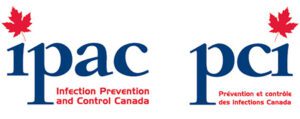The latest mold stories in the news
As part of our ongoing efforts to bring you the most up to date information and the latest mold stories in the news we’ve launched a new weekly series today. Titled simply, Mold News this Week, we will be issuing the absolute latest and most up to date information on mold and mold contamination removal. These stories cover things such as how mold continues to adversely affect peoples lives and the latest in health and medical study releases and updates to mold contamination removal procedures.
This weekly release fills a gap in what is currently available to consumers…a place where the latest information is made available in one location.
So , please find our first release informative and useful in your approach to addressing the health and welfare of you and your family.


Mold News this Week – January 2, 2019
Home and Work Series this Week
Story 1 – New York City, December 28, 2018 – Dozens of Nurses, Staffers on NYC Hospital Maternity Floor Report Being Sickened by Mold
No patients reported symptoms related to the issue, the hospital said in a statement
WHAT TO KNOW
-
- 53 staffers at an NYC hospital reported falling sick from an odor on the maternity floor that turned out to be elevated mold levels
- Staten Island University Hospital says no patients reported symptoms; nearly 30 independent environmental tests were conducted
- The most recent air monitoring results came back all clear and the hospital is working on rebuilding the nursery, officials said
More than 50 nurses and staffers on a New York City hospital’s maternity floor have reported getting sick from an odor that tests confirmed to be related to mold, authorities say.
Staten Island University Hospital said in a statement Monday the odor was first reported on its maternity floor at the north site in the fall. Newborns were moved to a backup nursery while environmental tests were conducted — and those found mold at moderately elevated levels, “similar to those detected outdoors.” Water-borne mold was also found behind a sink wall.
A total of 53 employees reported symptoms — ones ranging from dizziness to headaches and sore throats — they attributed to the mold conditions, according to the hospital.
No patients have reported complaints.
One woman, a 65-year-old nurse named Robyn Jacobs, told the Daily News she would get sick every time she went into the nursery. In addition to headaches and scratchy throat, she said she suffered chest tightness — almost like an allergic reaction. She says she saw up to eight staffers get sick on one day.
The hospital says its most recent air monitoring results came back all clear and they have begun to rebuild the nursery where the odor was first detected. It says it had nearly 30 independent environmental tests done and those results indicated no risk to patients.
“Through the course of the project, hospital administration has been directly communicating with staff multiple times a week, met with union representatives numerous times and notified the appropriate regulatory agencies to proactively address this matter,” the statement from Staten Island University Hospital Executive Director Dr. Brahim Ardolic said. “Our main focus has been to properly mitigate the nursery area to continue providing care in the safest environment possible for our patients and staff.”
Jacobs still expressed concern. “They keep telling us it’s safe, it’s safe, it’s safe,” she told the News. “How safe is it? Because we’re all getting sick.”
Story 2 – New York City, January 2, 2019 – Mold forces students out of their new school dorm in New York City
Staff at the 13th Street Residence discovered mold in the dorm after they noticed one of the walls was damp, an email says
WHAT TO KNOW
-
- A mold problem has forced The New School to move more than 100 residents out of a dormitory in Manhattan, an email sent out by the university says.
- Staff at the 13th Street Residence, between Sixth and Seventh avenues in Greenwich Village, discovered mold in the dorm after they noticed one of the walls was damp, the email says.
The university is moving all 161 residents out of the dorm and into other buildings “out of an abundance of caution,” the email notes.
“Although we have no reason to believe the mold is a health risk and we have received no reports from residents in the building of health issues that could be related to the mold, the mold is being tested,” the email says. “Unfortunately, we will not know the results of those tests for several weeks.”
The school believes the problem at the 13th Street Residence is an “isolated situation,” but says it plans to inspect all of its other dorms for mold.
Students told News 4 New York they were upset about the unexpected move.
“It’s not even normal. We’re paying so much for this… and now they’re moving me to 92nd Street, and my classes are all on 13th,” student Mira Siouffi said.
Undergraduate tuition at the school is around $23,000 per semester, according to the school’s website, while housing fees can surpass $20,000.
“We understand the inconvenience that this causes for members of our community, and we are doing everything we can to ensure that students have the space and resources they need to carry on their studies with as little disruption as possible,” the school said in its email.
Medical – Updated Stories this week


Story 1 – Chicago, December 28, 2018 – Millions of people suffering from mold toxicity go undiagnosed, experts say
Toxic mold exposure is on the rise, and most people aren’t even aware they’re at risk, according to experts.
“There are millions of people suffering from mold toxicity that don’t know it because it’s going majorly undiagnosed,” said Dr. Neil Nathan, a Board Certified Family Physician and author of the book “Toxic” (Victory Belt Publishing).
Mold, which releases mycotoxins in the air due to water damage, is often invisible with the naked eye, but dangerous to those with toxin sensitivities. Nathan said not everyone who is exposed to mold gets sick.
“We do believe that it’s somewhat genetic so certain people are more genetically predisposed to it than others,” Nathan said. “So you can have several people living in a moldy environment and only one of them will get sick.”
Doctors estimate 25 percent of the population (or 1 in 4 people) have the gene that makes them more susceptible to mold sensitivities. Some of the symptoms for mold toxicity include fatigue, headaches, nausea, anxiety, Irritable Bowel Syndrome, muscle aches, brain fog, weight gain, adrenal fatigue and sensitivities to light and sound. Nathan said it’s never too late to get treatment, but curing it can only happen by clearing all toxic mold from your home, office, car and eventually the body.
“My symptoms got so bad that it affected everything,” said Chicago radio personality Kathy Hart, who discovered she’s one of the “susceptible 25 percent” after being misdiagnosed by several doctors and specialists. “One neurologist told me I was just ‘stressed’ and that I needed to see a psychiatrist, and I walked out of his office in tears,” said Hart, who was suffering from headaches, dizziness, adrenal fatigue, panic attacks and noise and light sensitivities. “I’d been to two different neurologists, an eye doctor, and they all said it was just stress. It was finally my physical therapist that suggested I look into mold.”
Physical therapist Michelle Dwyer, who initially treated Hart for vestibular symptoms such as vertigo and dizziness, said many of her patients with chronic issues discover mold to be part of the reason they aren’t fully recovering.
“We only have a few physicians in our area who know about mold and the reason they do is because they’ve been through it themselves,” said Dwyer, who was treated for mold toxicity after discovering her home had water damage. “If more medical professionals got educated about mold toxicity and its effects on the human body, there would be fewer cases of misdiagnosis. They came out with studies in 2017 that showed mold can be a direct link to Alzheimer’s and other kinds of dementia, and once these patients get treatment for mold, their symptoms improved. Cognitive impairment is a big factor with mold. So is muscle and joint pain and lethargy, which can be misdiagnosed as chronic fatigue, the list goes on.”
Nathan agreed and said many doctors need to consider a person’s environment when assessing their symptoms.
“These illnesses are increasing and if we do not grasp this, take it seriously and monitor our exposure, all of us are going to be sick,” Nathan said.
Here are tips to treat and diagnose mold toxicity/sensitivities.
Get tested – Dwyer and Nathan recommend testing and diagnosing mold toxicity, (please see our previous post on blood tests available here in Canada,
“The single most useful way to find out is to do a urine mycotoxin test,” Nathan said. “This is simply collecting the urine, mailing it to the company and then they measure. If you get a positive test in the urine, this means there is an excess amount of toxin in you and you need to get to work on treating it.” Here’s a helpful post we issued last year, https://mapleleafmold.ca/symptoms-mold-importance-blood-test-confirm-suspicions/
“After you test yourself, you need to have your home checked and there are tests you can do at home where you’re just taking a wipe and wiping the surfaces,” Dwyer said.
Don’t rule anything out – Nathan and Dwyer said mold can live anywhere, old or new construction. All it takes is 48 hours for it to develop.
“I lived in a condo that had been rehabbed and it looked fine but I found out the roof had leaked for years before I moved in there so I was slowly getting exposed,” Dwyer said. “And college dorm rooms now are under scrutiny. So many places go unchecked, it’s up to you to be your own advocate.”
“I know someone who had dogs who peed on the carpet so much that the wood underneath started growing mold and they were affected,” Hart said. “There are so many different sources.”
Learn self-care – Dwyer said to get an air purifier in your home and bedrooms with a “good HEPA filter.”
“I also teach my patients to do lymphatic massage on themselves to help with the drainage,” Dwyer said. “And intense sweating from an infrared sauna or Epsom salt bath are great ways to clear toxins out.”
Get inspired to do something about it – “I felt like I was going crazy because no doctor could tell me what was wrong,” Hart said. “Sadly, it’s common for many people to feel that way because much of the medical community isn’t familiar with these mold illnesses. I hope that by sharing my story, it will bring much needed awareness to the condition and help those who are suffering finally get properly diagnosed.”


Maple Leaf Mold Inc. is a certified mold / asbestos removal and biological disinfection / air analysis company located in Toronto that uses certified IICRC technicians for all testing and remediation projects.
We are a professionally licensed firm experienced in testing, verifying and removing Mold / Asbestos / Lead and other environmental contaminants as well as providing disinfection services to control and kill biological contaminants.
Call 416-254-7256 to talk with us about your issue anytime.






